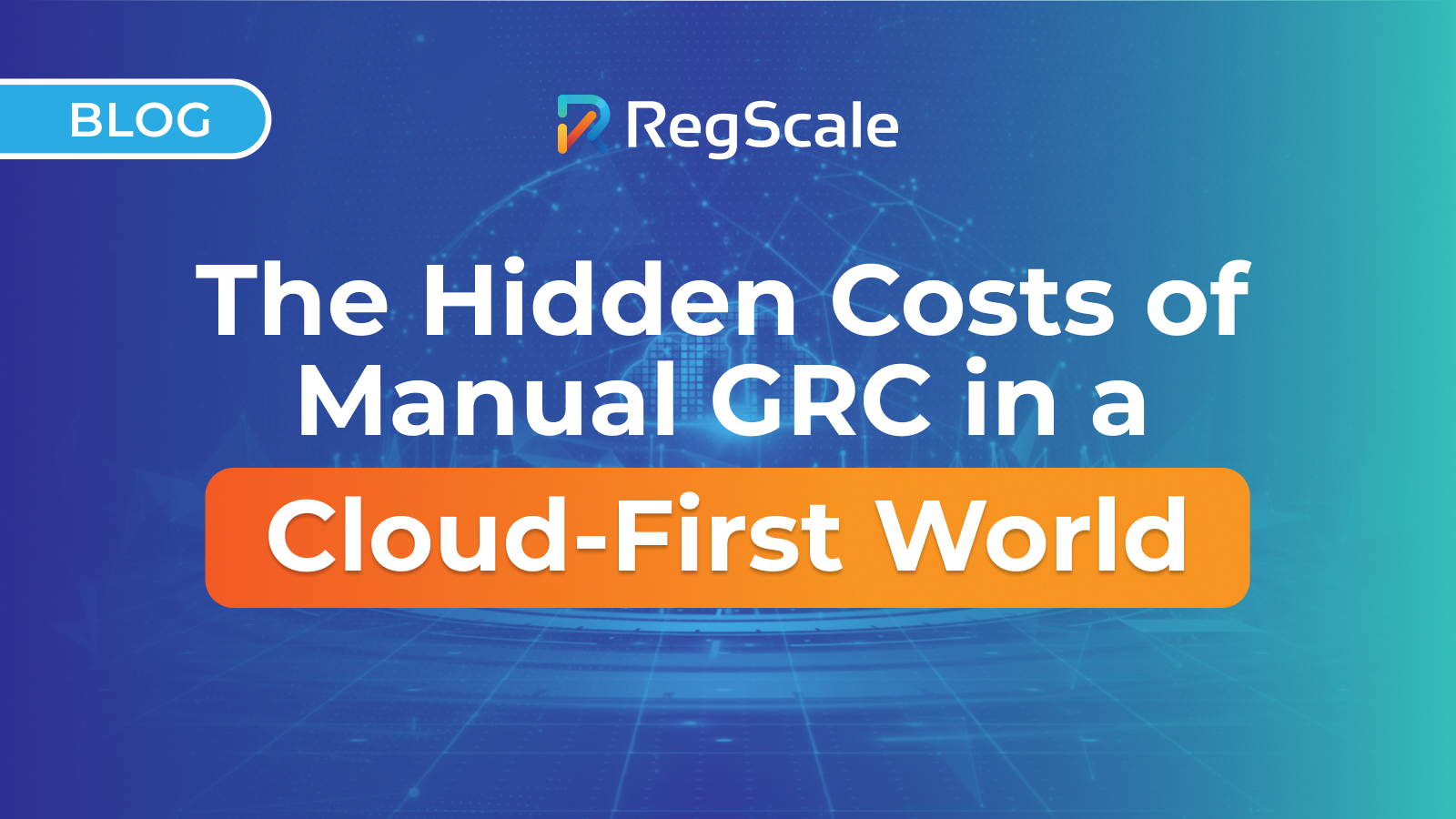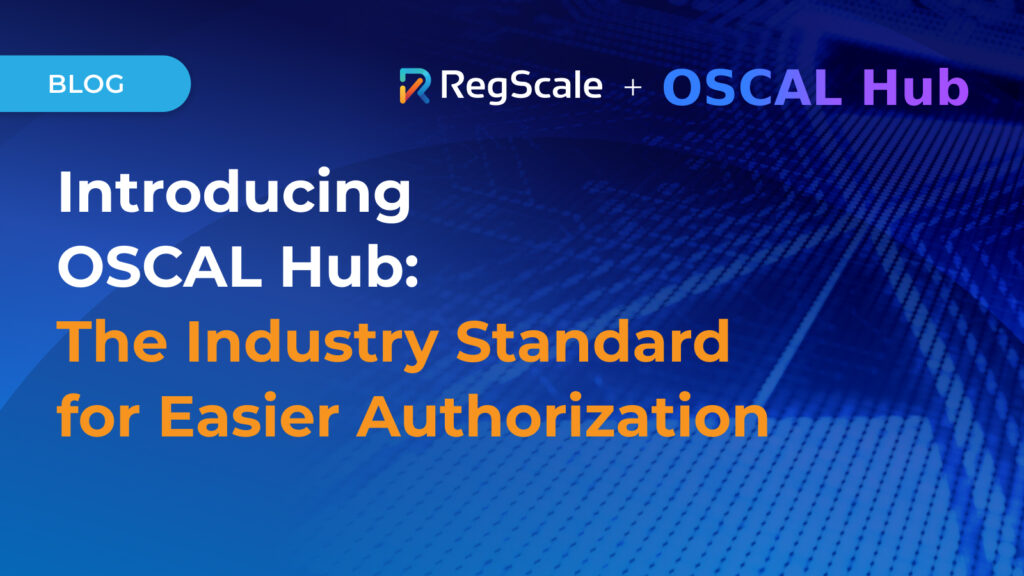Rethinking GRC: Navigating Challenges in a Cloud-Native World
Before I joined RegScale, I was a big buyer of legacy GRC tools. I won’t name any particular tools, but most of them featured 20-year-old approaches and “automation” in name only. At the end of the day, they left teams heavily reliant on manual processes disguised as digital solutions, with no shortage of spreadsheets and tedious tasks.
At the same time, I’ve watched two major trends reshape the GRC landscape:
- The shift to cloud-native architecture: As new applications become increasingly cloud-based and ephemeral, traditional security methods of drawing boundaries around fixed assets are becoming obsolete.
- An intensifying regulatory environment: With everything from new SEC reporting requirements to AI regulations stacking up, the compliance burden is growing exponentially.
These trends, combined with the relentless pace of tech advancement (i.e. Moore’s Law), are forcing us to operate four to eight times faster than before — all while juggling the limitations of legacy tools and a growing set of regulatory requirements.
In the conversations I’ve had with industry professionals, I hear the same struggles over and over: large backlogs, insufficient staff and resources, and a perception that cybersecurity is an obstacle to innovation. Plus, the manual nature of current GRC practices just makes it next-to-impossible to keep pace with all the demands.
In my podcast episode with the Cloud Security Alliance’s John DiMaria earlier this year, I took a deep dive into these challenges and some potential solutions. Today, I want to expand on that conversation and explain how Continuous Controls Monitoring (CCM) can enhance efficiency, reduce costs, and ultimately replace those legacy GRC systems that just aren’t keeping up.
Software is eating the world, and it’s doing so at an exponential rate. Moore’s Law still applies, and our human ability to keep pace is already being outstripped. If you haven’t already started planning how to leverage automation and AI in your GRC programs, you need to start now. Those who don’t adapt will get left behind.
Travis Howerton
Co-Founder & CEO, RegScale
Agile Compliance: A Seismic Shift in GRC
If we think about traditional GRC programs, we tend to picture periodic audits with point-in-time snapshots of your compliance status.
The problem with this approach is that it doesn’t fit the dynamic nature of our modern systems. Auditors are starting to ask whether infrequent control checks are enough, and organizations are starting to see a growing demand for constant audit readiness.
Enter agile compliance: a concept that moves us away from sporadic assessments and toward continuous monitoring. A colleague aptly compared traditional audit programs to preparing for a mother-in-law’s visit, where you frantically clean to an unrealistic standard and then pretend your house always looks that way. But what if we maintained that standard consistently?
We can achieve continual audit-readiness by leveraging the right tech in the right ways:
- Using APIs to create self-updating documentation
- Implementing Compliance as Code to reduce manual processes
- Employing AI to automate those repetitive “stare-and-compare” tasks
The benefits of agile compliance are real-time insights and a new level of accountability. Instead of wondering what happened between annual audits, we can see the whole picture, all the time. It’s like having a 24/7 security camera versus walking the perimeter and checking the locks once a year.
Ultimately, nobody wants to do a poor job in security. We just struggle to optimize the resources we’re given against the magnitude of the challenges and threats we’re facing. Agile compliance and automation are how we can right the ship.
Automation: The GRC Game-Changer
When we talk about automation in GRC, we’re not just talking about efficiency. We’re also talking about transformation, about looking at each step of our processes and asking where we can save time, cut costs, and reduce risk.
In our experience, there are three main areas where automation can make a significant impact: distilling critical information, breaking down data siloes and bottlenecks, and supercharging staff. Let’s take a closer look at each of them.
From Data Overload to Actionable Insights
First, GRC teams face an overwhelming volume of data, not a shortage. The challenge lies in finding the needle in a haystack of needles, especially when vast amounts of unstructured data are involved. Traditionally, teams have spent countless hours on soul-sucking work to manually pull information and evidence for audits.
Luckily, we can use automation to end the drudgery and surface the crucial information for human analysts. By using a Compliance as Code approach and NIST’s Open Security Controls Assessment Language (OSCAL), teams can transform the flood of data into a precise, machine-readable format that AI can then distill down further.
The result? Smarter, more efficient decision-making with less noise, less manual effort, and more insight.
Breaking Down Silos
Automation is also key to breaking down data silos and improving coordination among teams.
Take vulnerability management, where the people fixing the security issues are usually IT staff and not cyber. By automating workflows and handoffs between groups, we can ensure that tickets are automatically generated and updated when a new vulnerability is discovered. This improves your security posture and keeps your compliance status updated in real-time with unprecedented visibility.
Automation is what allows us to unclog bottlenecks, streamline processes, and make the entire GRC workflow smoother, more precise, and more cost-efficient. It’s not just tweaking the old way of doing things — it’s fundamentally rethinking how we can approach GRC in a modern, dynamic, cloud-native way.
Supercharging Staff
Contrary to what the talking heads might say, automation isn’t about replacing humans — it’s about supercharging them.
By eliminating the kind of manual work that can consume up to 80% of an analyst’s time, automation frees up people to focus on things that really matter, like strategic risk management. (After all, no one wants AI making the risk-based decisions for their organization.) If you can give staff the freedom to focus on their areas of expertise, they’ll be much more valuable to the organization and much more satisfied in their roles.
There’s a real skills shortage in our industry, and cybersecurity experts are difficult to find. So why not use automation to let that one expert operate with the efficiency of four or five?
Transforming Government GRC: An Automation Case Study
In the Department of Defense (DoD), I want to share a success story that illustrates the power of automation in GRC. We’ve been working with a large government agency in the national security sector that was struggling to streamline their cloud access and security compliance.
Using traditional methods, this agency’s Authority to Operate (ATO) process for new cloud technologies was taking over 18 months, creating a major bottleneck for innovation. They needed to switch from manual, resource-intensive processes to an automated framework that could secure cloud access, enable rapid development, and ensure systems were ATO-ready at deployment.
With those goals in mind, we helped the DoD implement compliance as code to automate their NIST Risk Management Framework (RMF) and System Security Plan (SSP) updates. In addition to automation, our platform provided real-time dashboards and self-updating paperwork to improve visibility and drastically reduce manual compliance processes.
As a result, we dramatically reduced the agency’s time to achieve ATO and lowered their program costs. We also helped them minimize inefficient handoffs between teams, so that what once took the agency months to do manually is now taking a fraction of the time. This tells us two things:
- So many legacy GRC processes are fundamentally broken and inefficient.
- The power of automation in the GRC space is real and significant.
We’re still in the early stages with this project, and there’s much more that we hope to achieve. But given the agency’s critical national security role, this is already a success story that we’re incredibly proud of. It’s a powerful example of how automation can not only streamline GRC processes but also directly benefit an organization’s core mission — and in this case, our national security.
Final Takeaways: Navigating the Future of GRC
I want to close by mentioning a few GRC trends and future insights. These aren’t abstract predictions so much as concrete realities that we’re going to need to face head-on — and soon.
First and foremost, we need to acknowledge that software is eating the world, and it’s doing so at an exponential rate. Moore’s Law still applies, and our human ability to keep pace is already being outstripped. If you haven’t already started planning how to leverage automation and AI in your risk and compliance programs, you need to start now. Those who don’t adapt will get left behind.
Second, the global landscape is becoming increasingly less stable. As a former national security professional, I see us heading into a decade of increased cyber warfare and more sophisticated attack scenarios. We’re already being reminded that automation isn’t just helping the good guys, and that AI advancements are being leveraged around the world to scale up cyber attacks.
In response, we’re going to see a surge of national security threats and a corresponding surge in regulatory interest and new compliance requirements. This will encompass everything from AI-centric legislation to business resiliency rules for financial institutions and DORA in the UK. If you’re already struggling with your GRC program, be prepared: the landscape is becoming more hostile, and your organization will need to evolve quickly to stay ahead.
So, what can we do? I often think back to something that a former colleague at Oak Ridge National Laboratory told me. At the time, I had a project that wasn’t going well, and I was kind of dancing around an issue when he said, “Travis, the best plans start with the truth. You can accept it now or you can accept it later. It’ll still be true later, but it’s always faster and cheaper to accept it now.”
The sooner we accept the truths of our future GRC landscape — the massive shift to cloud-native tech, the massive growth in regulatory scope and penalties, the undeniable acceleration of Moore’s Law — the sooner we can start planning, and the better positioned we’ll be to navigate the many challenges ahead.
Ready to get started?
Choose the path that is right for you!
Skip the line
My organization doesn’t have GRC tools yet and I am ready to start automating my compliance with continuous monitoring pipelines now.
Supercharge
My organization already has legacy compliance software, but I want to automate many of the manual processes that feed it.

